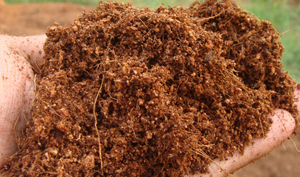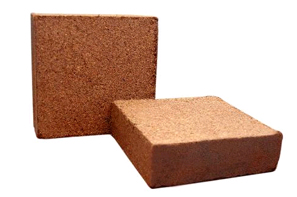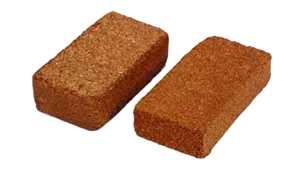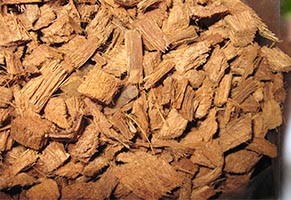
Coco coir / Coco peat fibers have multiple uses. In horticulture, coir is a substitute for sphagnum (peat) moss. Coir has also been used to deter snails from delicate plantings, and as a growing medium in greenhouse horticulture. Coir is also used as a substrate to grow mushrooms and can be used as a terrarium substrate for reptiles or arachnids
It is produced from the brown husk that surrounds the coconut shell. It is a natural and renewable product. It is composed of millions of tiny micro-sponges, which absorb and hold up to eight times their weight in water. It is a sturdy substance, lasting three times as long as peat moss. Unlike peat moss, coco coir is environmentally friendly. Coco coir is a great addition to the hydroponics market.
Coco coir / Coco peat is sold in small compressed block, bricks and in bags which expand 6 to 8 times in volume when you add water.
Why use coir?
Excellent Air Porosity – Coir maintains excellent air porosity even when saturated and gives better crops with faster developing roots and more flowers and fruit per plant when used correctly.
Excellent Water Retention – Coir has better water retention qualities than peat and other growing media. This has obvious advantages in dry climates or at times when plants cannot be watered frequently.
Quickly Reabsorbs Water From Dry State – Coir peat absorbs moisture immediately, even from a dry state, (sphagnum peat on the other hand tends to shrink when dry and form a water-repellent crust which causes water run-off from the top surface and water loss between the peat and the  inside edge of the plant pot). Thus plants growing in coir tend to recover better and more quickly from dry conditions.
inside edge of the plant pot). Thus plants growing in coir tend to recover better and more quickly from dry conditions.
Irrigation Efficiency – The ease of re-wetting and the quick drainage characteristics of coir mean that coir needs to be irrigated less frequently and for shorter periods. This leads to reduced leaching losses of nutrients and lower water use.
Faster Germination Times And Quicker Seedling Rotations -The inherent qualities of coir and the optimum water/air availability are ideal for quick rooting and propagation. In many cases this leads to more seedling rotations per year, a higher percentage of seedling and propagation take-up and more efficient use of greenhouse equipment.
Environment – In its unprocessed state, coir dust is a waste product. Its use therefore does not involve the destruction of peat bogs and natural wetland wildlife habitat. It is a renewable resource with no hazardous disposal problems (unlike some alternatives such as rock wool).
Degrades Slower – The lignin content of around 45% ensures that the excellent water/air ratio is maintained over a longer period of time than is the case with many other substrates.
Free From Soil Diseases – Because Coir originates above ground it does not contain any soil diseases. In fact several studies have indicated that coir substrate brings increased resistance to pythium and other root diseases.
5 Kg Blocks (11 lbs.)

– Size: 30 cm x 30 cm x 15 cm (approx. 12 x 12 x 4″)
– Low EC: below 0.4ms/cm (1:5 volume extraction methods)
– Compression ratio: 1:5
– Fiber Length: below 4mm
– Moisture: Below 20%
– pH: 5.5~6.5
650 gram Bricks (1 lb. 7 oz. approx.)
– Size: 20 cm x 10 cm x 5 cm Brick size (8 x 4 x 2″)
– Low EC: below 0.5 ms/cm (1:5 volume extraction methods)
– Compression ratio: 1:5
– Fiber Length: below 4mm
– Moisture: Below 20%
– pH: 5.5~6.5
Coco Husk Chips (Loose in bags)
– Size: 12 mm
– Low EC: below 0.5 ms/cm (1:5 volume extraction methods)
– Moisture: 15% – 20%
– pH: 5.5~6.5
– Color: Light Brown
– Bag Weight: 5 Kg to 25 Kg. as required

Geo Textiles / Erosion Control
Coir Geotextiles protect land surface and promote quick vegetation. Made with 100% coconut coir fibers. Erosion control mats are utilized for stabilizing slopes. Totally biodegradable, geotextiles help soil stabilization and renew vegetation in varying slopes. In woven and non-woven presentations.
Advantages
• Bio-degradable and Eco friendly.
• Easy to install and maintain.
• UV resistant.
• High tensile strength and durability.